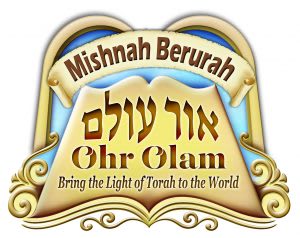Reheating Cooked Food

Question: Is there any permissible way to reheat cold cooked food on Shabbos?
Discussion: Reheating cooked food on Shabbos can involve two different prohibitions: The first is the rabbinic edict against placing cold cooked food on a heat source – even one which is covered by a blech – which applies to all foods, dry or liquid. The second, which applies only to cold liquids, is a possible transgression of the actual Labor of Cooking, since a cold liquid – even if it has already been cooked – may not be reheated. The practical halachah is thus as follows:
- It is forbidden to place cold food—dry or liquid, cooked or uncooked—directly on a fire[1] or anywhere on a blech where the food could possibly reach the temperature of yad soledes bo [approximately 110° F].[2] But it is permitted, according to many poskim, to place any cold food on the edge of the blech, far enough from the flame to ensure that the food will never reach the temperature of yad soledes bo.[3] Other poskim do not permit doing so, even for cooked, dry foods.[4]
- It is permitted to place dry, cold[5] meat, chicken or kugel on top of a pot of soup or cholent which is on the fire or in a crock-pot [even if the heat source is not covered],[6] or directly on top of a radiator,[7] even if the food will become piping hot.[8] Some poskim hold that it is also permitted to place such foods on the lid of an empty pot [or an empty overturned pan] placed over the fire, but only if the heat source is properly covered.[9] Others forbid using an empty pot or pan altogether.[10]
- It is permitted to place cooked, dry foods or warm liquids such as soup or gravy near a heat source, covered or uncovered, even if the foods will reach the temperature of yad soledes bo. However, it is only permitted to place cold cooked liquids, or any uncooked food, near any heat source if the food will never reach the temperature of yad soledes bo.[11]
Whenever food is reheated on Shabbos, the food items should not be completely wrapped and sealed in aluminum foil. Instead, the edges of the foil should be left slightly apart to avoid the prohibition of hatmanah.[12]
[1] Mishnah Berurah 353:87.
[2] Igros Moshe, O.C. 4:74 Bishul 31-32. [For a dissenting, more lenient opinion which permits placing cooked, dry, cold food on any area of a blech, see Yechaveh Da’as 2:45.]
[3] Igros Moshe, O.C. 1:94; O.C. 4:74, Bishul 32; Shulchan Shelomo 318:34-2; Rav N. Karelitz (Orchos Shabbos 2, note 107).
[4] Rav Y.S Elyashiv (Orchos Shabbos 2, note 107), based on Chazon Ish 37:8.
[5] This should not be done for frozen items which have ice crystals on them, since cooking ice is prohibited; Minchas Yitzchak 9:31; Shulchan Shelomo 318:33-2.
[6] O.C. 253:5 and Beiur Halachah 253:3, s.v. v’yizaher.
[7] Igros Moshe, O.C. 4:74-34; Rav S. Wosner (Otzros ha-Shabbos, pg. 101).
[8] See Chazon Ish 37:14 for an explanation of why this does not constitute “roasting after cooking.”
[9] Rav S.Z. Auerbach (quoted in Orchos Shabbos 2:66); Shemiras Shabbos k’Hilchasah 1, note 126.
[10] Chazon Ish 37:9; Rav Y.S. Elyashiv (quoted in Orchos Shabbos 2:66)
[11] O.C. 318:14-15; Mishnah Berurah 253:15 and 77.
[12] The poskim debate if hatmanah is a problem in this case: Igros Moshe, O.C. 4:74-3 and Rav S.Z. Auerbach (Shulchan Shelomo 257:5) are stringent, while Rav Y.S. Elyashiv and Rav Y.Y. Fisher (quoted in Meor ha-Shabbos vol. 1, pg. 84) are lenient. [This also seems to be the view of the Chazon Ish 37:32.] If the purpose of the aluminum foil is not to retain the heat but merely to serve as a container, all poskim agree that it is permitted. If more than one piece of aluminum foil is wrapped around the food item, then all poskim agree that it is prohibited; see Machazeh Eliyahu 32.
